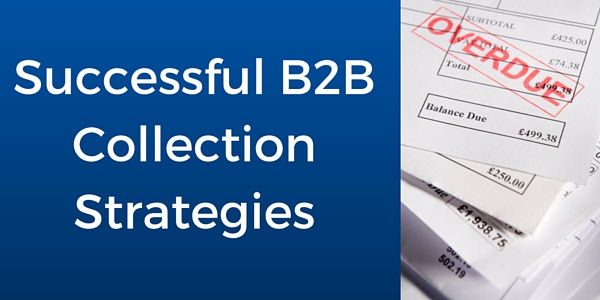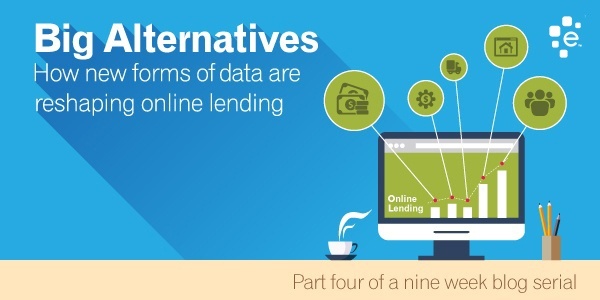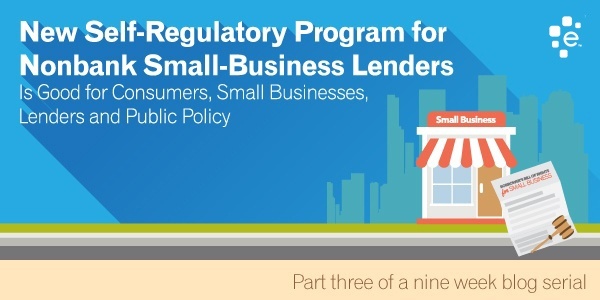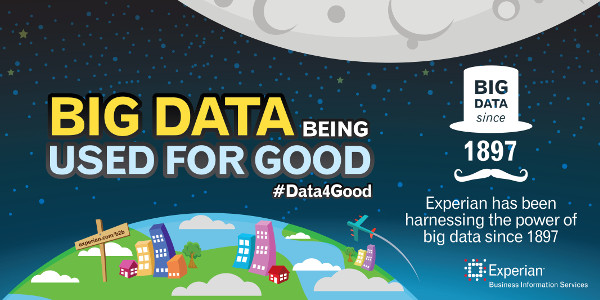All posts by Gary Stockton

Businesses are faced with the need to collect on delinquent accounts. When pursuing these past-due accounts, the most successful way to approach them is with a combination of perseverance, politeness, and professionalism. This serves the dual purpose of increasing the likelihood of receiving a prompt payment and also staying within the guidelines set forth by the Fair Debt Collections Practices Act. Perseverance While constantly calling a customer for payment can be a drag, perseverance will pay off—literally. Keep notes when calling the customer, detailing when you called, the time you called and if the customer promised payment. If payment was promised, make a note of when. Most software will have note-taking capabilities, so use that to keep track of whether the customer is following through with payments or not. Aim to call once a week to keep your company in the forefront of the customer's payable person. Politeness Being polite can be trying when the customer is being evasive about payment status. Remember the old adage of catching more flies with honey than vinegar. Being polite gives the customer less reason to avoid payment. Share a story or joke with them. Get familiar with the person doing the payments for your business. Avoid negative outbursts containing vulgar language or calling multiple times per day, which are both violations of FDCPA code. Professional Above all, remain professional. Do not allow emotion or personal feelings about the customer cloud your attitude. This is strictly business, and the customer who may be slow or evading payment would do the same to anyone else in your position. Talk to them about payment plans if they are having a hard time paying. If they are hesitant to pay, ask for the reason why. Is there an issue with the product or service your company offers? If there is a problem with the product, talk to product/servicesupport staff to see if they are aware of this issue. If they are, ask them to contact the client with the solution. Sometimes it is necessary to involve sales representatives while collecting. The sales rep can go in and play "Good Cop," letting the customer know that they would love to sell them more product or further service, but that there's a problem with the account that needs to be resolved with the customer's accounts payable department. This normally results in the procurement associate contacting the accounts payable department and asking why payment has not been made on the prior purchase. Thisfacilitate payment, and in turn, increase company cash flow. Using these techniques will reflect respect and courtesy, which in turn elicits goodwill with the customer. Business Chat | LIVE - Credit & Collections with Katie Keitch We had a great interview about best practices in B2B Collection with Katie Keich. Katie is the V.P. of Commercial Services at InsideARM. She shares how to drive a successful collections strategy in your credit department or through 3rd party collections. Learn more about InsideARM

Online lenders represent a valuable resource for small businesses in need of working capital. Also known as "alternative" lenders, they are particularly useful to new businesses lacking the long, detailed credit history that banks and traditional lenders usually require to underwrite a commercial loan. This is why online lenders have become so popular with newer restaurants, small retailers, young business service companies and other enterprises that have no other place to go for working capital. Being unregulated, online lenders can be far more lenient with their lending requirements. However, online lenders don’t lend blindly. They don’t base their decisions on a catchy name and an inspiring mission statement. Online lenders have numerous sources of data upon which to base their decisions; as you might imagine, many of these sources are as "non-traditional" as the lenders themselves. For example, there are many names people use to describe the new types of data online lenders use to qualify applicants, such as “Big Data,” “alternative data” and “online data.” Essentially, they all mean the same thing: Readily available information that can be used to determine a business' financial health above and beyond traditional credit scores. New Data Sources for Online Lenders In addition to checking accounts and tax returns, online lenders may use any number of alternative sources of data to evaluate potential borrowers, including: Social Media. What customers say about a business on various social sites offer more important clues as to a business' health. A business with high ratings from a large number of customers may be a good risk, even if it's only been in business for one or two years. Online Financial Activity. Heavy activity on sites like PayPal or Ebay can suggest a healthy cash flow, something that's important to many online lenders. Permissioned access to business checking account information also allows lenders to better assess cash flow. Accounting Software. Having direct access to a borrower's accounting software (e.g. QuickBooks, FreshBooks) allows a potential lender to observe and track a borrower's financial activity in real time. Such data can also provide a lender with an early warning signal should the borrower suddenly get into trouble. Shipping Data. If a borrower is a retailer, whether B2B or B2C, are its products moving? Shipping data -- both volume and frequency -- is another valuable indicator of financial stability. Privacy & Security Issues How do online lenders capture this data, particularly the proprietary information not readily available through a Google search or social media? They get it straight from the borrower. When a business owner agrees to an online loan, they're often agreeing to provide the lender direct access to their business checking, accounting and management system. And sometimes not just for a one-time look, either. This may involve long-term access so the lender can keep an eye on its investment. The downside to this arrangement is, of course, privacy and security vulnerabilities. The upside is that it may help expedite future borrowing. Interpretation is Critical Of course, data by itself does not tell the whole story; it must be properly interpreted. This is particularly true of alternative data. For example, the ratings a restaurant receives on social media can't be judged against ratings for a dry cleaner. A restaurant in any city is likely to get far more social media coverage than is a neighborhood dry cleaner. However, a dry cleaner with just two or three reviews may be a far better business risk than a restaurant with 10. It's all about being able to interpret, normalize and glean insights from the data you collect. Packaging Online Data for Risk Assessment Five years ago, Experian created its Global Data Laboratory in San Diego for the express purpose of mining alternative data and seeing if it could be packaged as a commercial product to help online lenders and other companies evaluate new, small companies. Staffed with a team of Ph.D.’s in data science, the lab has built a one thousand (1,000) terabyte database containing information from thousands of sources. "One of the big challenges any lender faces is determining if a borrower is legitimate. This is true even for traditional businesses, like a Home Depot that may want to open a credit line with a small contractor that has little or no credit history. For every 100 companies that are 'invisible' to lenders, we can now establish the legitimacy of 20 businesses using nothing but online sources. That means a business can now have as much as 20 percent more customers than before just by accessing this alternative data. The lab's new algorithms are also highly predictive of a company's longevity.” Eric Haller EVP Experian Data Labs For new and emerging businesses, leveraging data from the Web can deliver a 40 percent lift in predictive performance compared to the industry averages for predicting whether a company will go out of business or not. Just Part of the Equation As useful as alternative data is, it’s just part of the algorithm an online lender uses to score borrowers. Traditional credit scores are usually still part of the evaluation process. When available, nothing predicts credit risk better than credit history. Even the most sophisticated online lenders are still going to look at trade experience, business registrations and other third-party information. Alternative data sources become just one part of the equation. New sources of customer information and readily available online data, combined with traditional data and metrics – and the experience necessary to properly interpret both – has created a robust online financial marketplace and gives small business owners unparalleled access, flexibility and choice when it comes to capital financing. While it's still a bit like the Wild West, the world of online lending continues to grow robustly. Through the use of Big Data, Experian is able to provide insights that help minimize risks for borrowers and lenders alike. That helps everyone. Related articles Just how alternative are today’s online marketplace lenders? How online marketplace lenders are changing the rules of small-business finance Self-Regulatory Program for Nonbank Small Business Lenders Top regulatory priorities for commercial lenders Playing to Your Strength - Opportunities for Regional Banks to Build Better Lending Portfolios Game Changer - How Marketplace Platforms Are Bringing Financial Institutions Back to Small-Business Lending Marketplace Matchmakers - How Loan Aggregators Bring Borrowers and Lenders Together New Frontiers - What's Next For Marketplace Lending?

The Responsible Business Lending Coalition — a group of nonbank small-business lenders — announced a self-regulatory program during August that is designed to bring greater clarity and consistency to its industry’s pricing and consumer protections. The Small Business Borrower’s Bill of Rights outlines six primary principles that those signing the pledge will abide by when lending to small businesses. They include: The right to transparent pricing and terms, including a right to see an annualized interest rate and all fees The right to non-abusive products, so that borrowers don’t get trapped in a vicious cycle of expensive reborrowing The right to responsible underwriting, so that borrowers are not placed in loans they are unable to repay The right to fair treatment from brokers, so that borrowers are not steered into the most expensive loans The right to inclusive credit access, without discrimination The right to fair collection practices, to prevent harassment and unfair treatment “Online loans with shorter terms, and high-priced loans have a higher degree of creating debt traps,” explained Conor French, director of legal & regulatory for Funding Circle, one of the coalition's founding members. “Borrowers in the online market need to be able to make an apples-to-apples comparison between lenders and between loans. We wanted to create a choice architecture that allows borrowers to see similar information.” Adoption of Industry Best Practices Helps Establish Clear Rules of the Road The adoption of self-regulatory standards by this group of small-business lenders is an important step in proactively addressing some of the concerns that policymakers may have about this emerging market. It also is vital to helping provide transparency and assurance to small-business owners that rely on affordable access to capital to start and operate a business. Non-bank small business lenders often fall outside some of the regulatory framework that regulated entities must meet. However, as new innovative underwriting solutions will sometimes incorporate the consumer credit history of the business owner or entrepreneur, the line between consumer and business regulation can get blurred. The self-regulatory pledge incorporates many of the themes that have been part of the Consumer Financial Protection Bureau’s push for transparency across the consumer financial marketplace, including the short-term lending market. "Online loans with shorter terms, and high-priced loans have a higher degree of creating debt traps.” Conor French Director of Legal & Regulatory Funding Circle “Abuses can come from lenders, brokers or other unsavory players,” French noted. “For example, if you're using a broker or partner, are there conflicts of interest? Are they arranging the deal that’s best for you or best for them? Only by having open transparency can you understand what your options truly are. You can't just accept what someone else chooses for you at face value.” Self-Regulation Shows Self-Discipline and Addresses Evolving Public Policy Priorities Industry self-regulatory standards, such as the Borrower’s Bill of Rights, can be a good way for market leaders to demonstrate self-discipline by responding to the evolving public policy priorities of legislators and regulators. Industry self-regulation can be preferable to legislative or regulatory changes in some cases because it is flexible and can accommodate evolving market trends and consumer expectations. This is especially true when considering markets where innovative, disruptive technology and products are being developed, such as that of small business lending and peer-to-peer markets. The fact is that the development of regulations takes considerable time. Self-regulation can change more quickly as technology and markets evolve and mature. Industry self-regulation can help to provide transparency and protect consumers without impeding innovation. “Ultimately, I think government regulation of this market is inevitable,” French conceded. “But, we don't know when it will happen, who will write the standards or who will manage enforcement. We believe by encouraging responsible self-regulation, we're not only forestalling federal involvement, but also creating a model for what the government should do should it step in.” Gaining Critical Mass and Ensuring Accountability There are challenges when it comes to ensuring the effectiveness of a robust industry self-regulation regime. First, it can be difficult to have entities outside of the industry leaders to adopt and abide by the best practices. For small and medium-sized entities, the development of self-regulation may seem like a barrier to growth. Demonstrating the need and value of industry self-regulation to all market participants, regardless of size or market share, is essential. Another key hurdle is that any industry self-regulation must be accompanied by clear and well-respected accountability measures. Self-regulatory pledges are only as good as the accountability measures that ensure compliance. Without being held responsible for meeting industry best practices, regulators are unlikely to take the self-regulation seriously and may be more willing to cite the need for new regulation to address a market failure. However, accountability measures that have real teeth and oversight from a third party, such as a trade association, help to ensure that the industry takes the matter seriously and additional action from regulators is unnecessary. “Our Small Business Borrower’s Bill of Rights is currently being enforced by the Small Business Majority, a nationally recognized nonprofit organization,” French stated. “Having third-party endorsement helps avoid any conflicts of interest. As for actual penalties, we believe that reputational risk is quite significant.” Experian has experience implementing industry best practices Experian has considerable experience with the adoption of industry best practices across all of our businesses. Most notably, we worked closely with our competitors and clients to develop and implement enforceable self-regulation for the digital marketing industry. The Digital Advertising Alliance’s (DAA) self-regulatory regime has allowed for innovation and growth to continue, while at the same time enhancing transparency and consumer protection. Since its inception, there have been more than 50 million unique visitors to the DAA program websites, where consumers have been able to not only exercise their choice to opt-out of digital advertising, but also receive detailed education about the program. Experian looks forward to working with clients in the online marketplace lending segment as they implement the Borrower’s Bill of Rights in an effort to improve transparency and understanding of this market. Related articles Just how alternative are today’s online marketplace lenders? How online marketplace lenders are changing the rules of small-business finance Self-Regulatory Program for Nonbank Small Business Lenders Top regulatory priorities for commercial lenders Playing to Your Strength - Opportunities for Regional Banks to Build Better Lending Portfolios Game Changer - How Marketplace Platforms Are Bringing Financial Institutions Back to Small-Business Lending Marketplace Matchmakers - How Loan Aggregators Bring Borrowers and Lenders Together New Frontiers - What's Next For Marketplace Lending?

Originally designed as a cloud-based alternative to expensive software that was not flexible, Salesforce.com has become the platform of choice for many companies. To take full advantage of the many capabilities Salesforce provides and to avoid re-creating department silos that exist with most CRM/ERP platforms, more operational business groups are moving to Salesforce to take advantage of built-in features such as 360-degree prospect and account views, workflow, approval queues and tasks. Until now though, credit departments have typically operated in their own silo, accessing customer credit information through proprietary credit and risk management systems. At Experian, we are seeing an increasing need by finance and credit departments to be able to request, review and store our commercial data within Salesforce and quickly respond to credit requests from prospects as well as perform periodic account reviews of existing customers. To solve this disconnect, we have created Experian FusionIQ™, a new Salesforce.com Lightning-compatible app that enables B2B organizations to easily integrate Experian business and commercial credit information into their Salesforce.com CRM instance. With Experian FusionIQ™, we enable credit departments to make better credit decisions while increasing efficiency through easy access to our data. Salesforce.com no longer just for the sales department According to a recent study of financial services companies looking to deploy Salesforce.com, sixty four percent of respondents anticipated productivity gains; fifty percent expected a boost to enhanced cross-functional collaboration; fifty four percent anticipated increased visibility to customer information and thirty eight percent expected improved customer experience. Financial services companies are transitioning from utilizing Salesforce solely as a sales application to leveraging it as a platform for delivering customer engagement. Here are some of the things you can do with Experian FusionIQ™: Get a 360-degree view of all your customer accounts Payment history, public records and credit ratings are key factors when determining whether to pursue new customers or grow existing accounts. The Experian FusionIQ™ app allows you to centralize this critical information within the Salesforce.com environment, giving full transparency to key stakeholders within your organization. Your sales, finance, credit and other internal departments now can work together to optimize resources and prioritize accounts. When the Sales Department can't easily share information with the Credit and Finance departments, the approval process slows down, opportunities are lost, and customers aren’t retained. The Experian® FusionIQ™ app seamlessly adds the business risk data all your key internal stakeholders need within your Salesforce.com environment. Reports, Scoring, Alerts and Decisioning features are available to everyone on your platform, allowing them to make key review decisions in real-time. Create more proactive account-management workflows What is your process for monitoring significant changes in your accounts? The Experian FusionIQ™ app provides instant notification of late payments, defaults, bankruptcies and other changes in your customer and prospect accounts right within your Salesforce.com environment. Migrate your existing BusinessIQ℠ services into Salesforce.com Are you already using Experian’s BusinessIQ℠ to track your accounts’ credit statuses? The Experian FusionIQ™ app allows you to migrate the BusinessIQ services you’re already using into Salesforce.com easily to eliminate bottlenecks and accelerate decision making. Virtually no IT resources required The Experian FusionIQ™ app is designed to integrate automatically with your existing Salesforce.com platform with virtually no additional coding required. Out-of-the-box features give you access to reports, alerts and decisioning. Configure existing Salesforce.com features such as workflow, notifications and reporting to streamline your credit process. FusionIQ for Salesforce.com Lightning Demo

In 2014 the Subcommittee on Small Businesses and Entrepreneurism published a report that said only 4% of the total dollar amount of business loans go to Women owned businesses. After hearing of this report, Experian Decision Sciences decided to conduct a study of Women Business Owners to see how they were doing. The big "ah ha" moment for us was when we looked at this data and discovered how similar the Men and Women's credit profiles were. The commercial Intelliscore Plus scores were quite similar, the consumer credit scores are very similar, so we wondered why only 4% of small business loans was going to Women. One potential reason why Women might not be getting the credit they deserve on the business side is the credit utilization rate on their consumer credit. Utilization rate is the balance-to-limit ratio, and it tends to be higher for Women owned businesses than it is for Male owned businesses. And that could be a legitimate reason why lenders are perceiving Women owned businesses to be higher risk. Another aspect of our study pertains to the industries Women and Men are working in. Women owned businesses tend to be focused on personal services like beauty shops and child care, while Male owned businesses tend to be focused on industries like general contracting. Why is this important? Because the mix of industries carries different levels of sales amounts. We know that 14.5 percent of Women owned businesses have sales above $500,000 while Male owned businesses have 24 percent that have greater than $500,000 annual sales. It's important for business owners to understand all aspects of their credit, because the more that they understand, the more power they will have when they go in to apply for a loan. We created two Snapshot Infographics for this study which show the differences between Women owned businesses and Male owned businesses.

Imagine for a moment a young parent who has been laid off from their job. After months of looking for work they still have not found a job. To make ends meet they start doing landscape work for neighbors in the area, eventually jump-starting a landscaping business to provide for their family. With some hard work, they start to build up a clientele in the local neighborhood. While they are starting to get back on their feet slowly, they realize at the current rate, the business will not completely meet the needs of their young family. If they could borrow just $3,000 to buy some more mowers and trimmers, however, they could hire two friends and double the size of the business. With that in mind, let’s assume that they have a mediocre credit score, their credit card has a credit limit of $1,000 and they are maxed out. Furthermore, they don’t own a home to borrow against, and the loan size they are seeking is too small for a bank to even consider. However, if they could get a $3,000 loan, they could expand their business, create two new jobs and better provide for their family. There are folks just like the person described above all across the country looking for help. But where do they turn? Alternative financing options provide an avenue for entrepreneurs and other small business owners looking for commercial funding, who are otherwise turned down from more traditional financial institutions, such as banks and credit unions. By leveraging business credit data from credit bureaus, such as Experian, as well as other data sources, alternative financers are able to make lending decisions and extend credit to this segment of small business owners, enabling them to finance their company’s growth, ultimately stimulating the economy. One example of an alternative financer using such data to help open opportunity for small businesses is Opportunity Fund, a non-profit micro lender in California. Otherwise known as Community Development Financial Institutions, these micro lenders aim to create economic opportunity for underprivileged businesses in the U.S. And the need for these alternative financial institutions in California is critical. Despite recent upticks in our economy nationwide, things are still very tough in the Golden State. New data released by the Corporation for Enterprise Development (CFED) show many Californians are still struggling to gain a foothold in the economic recovery. CFED’s 2015 Assets & Opportunity Scorecard ranked California 50th among all states and the District of Columbia, for its large number (15.8 percent) of underemployed workers, 49th for both its home ownership and housing affordability rates, and dead last (51st) for high school degree attainment. Source: Corporation for Enterprise Development (CFED) Needless to say, there are a number of small business owners in California looking for financing to help grow their business. Organizations like Opportunity Fund help these business owners find affordable funding, and educate them on what they need to know about expanding. How alternative financers are helping? Opportunity Fund CEO, Eric Weaver & Rosa Funes A prime example of how alternative finance options are helping small businesses is the story of Paradise Flowers and Gifts. In Opportunity Fund’s most recent video, CEO Eric Weaver describes first meeting Rosa Funes, and how she described her longtime love of flowers. As a loan officer at the time, Eric described going to Rosa’s home and knocking on her door. She needed $500 to start a flower business. The amount was smaller than they had ever considered, but Eric was so moved by her story and her drive that he looked at her and said “Yes”, and told her “Rosa, you have a dream, don’t stop.” Alternative finance options, like Opportunity Fund are working hard every day to help small business owners and entrepreneurs gain the financial footing they need to succeed. After all, they are the backbone of our economy. The work that Opportunity Fund and other alternative financers have done will create a powerful ripple effect to drive economic opportunity across California, and the rest of the country. It’s the perfect example of how data can be used for the betterment of society and helps these smaller entrepreneurs grow.

Ten years ago movie night at our house would usually include a run to the video store where we would pick out a selection from the New Arrivals section, some candy, perhaps some popcorn and we would have our fingers crossed the selection was a good one. Nowadays it’s not uncommon to find us binge watching streamed episodes of “House of Cards” or “Mad Men on weekends.” What’s even more gratifying is after watching “House of Cards” unprompted, Netflix now recommends “The Newsroom” and other shows we invariably like. How do they know we would like these shows? This is predictive marketing at work, driven by big data. Netflix has developed sophisticated propensity models around each member’s viewing habits, and the net result is a better viewing experience with the service. We make amazing entertainment discoveries every week. In business marketing propensity models will determine which prospects or customers are likely to respond to a particular offer. For example, the marketing department of a large financial institution seeking to expand their commercial small business loan portfolio, might want to segment and target commercial lending offers to a concentration of customers most likely to accept a particular offer. When applied in business, propensity models can unlock opportunities for increased profit, share of wallet and deeper engagement with prospects and customers. At Experian, in a typical propensity modeling engagement we will first meet with our customers to understand their goals and objectives. We talk first about pre-screen criteria that enable us to screen out prospects that would not fit into the criteria. A sporting equipment manufacturer would probably not sell to companies in the mining or agriculture industries, so we weed out the ones least likely to lead to a successful conversion. Our data scientists and statisticians get to work on large data sets and evaluate a number of factors. Experian will then develop a customized response model that will identify significant characteristics of responders vs. non responders and therefore will maximally differentiate responders from non responders. Since (holding other factors constant) a higher response rate is preferred, a response model can help lower the cost per response. The response model will generate a “score” that can be used to rank order the prospects base in terms of response likelihood. The response model can be used in two different ways to achieve maximum effectiveness. It can be used to optimize the number of responders for a given sized solicitation, or it may be used to minimize the number of solicitations in order to achieve a budgeted number of responders. A high response score will indicate someone who is likely to respond, as is shown graphically in Exhibits 1 and 2. This work results in a model of the ideal target to which an offer would most likely resonate with. This is called a lookalike. The marketing department at our large financial institution might start off with a large list of potential candidates to send the offer via direct mail, 1 million for example. But mailing an offer to that many people may be cost prohibitive. A propensity model can identify prospects most likely to accept the offer, so your direct mail campaign is more targeted, thereby increasing ROI. A highly targeted mailing to your ideal targets is a safer bet, and would make for a much more predictable outcome. The marketer can feel more confident mailing an offer to lookalike prospects because the chances of successful conversion are that much higher. That’s the case for Woodland Hills based ForwardLine, who have been providing alternative short-term financing to small businesses since 2003. Working with Experian Decision Analytics, ForwardLine did an analysis of their direct marketing program and determined that 22 percent of direct mail was generating 68 percent of their underwriting approvals, exposing a significant gap in wasted marketing funds. The Experian Decision Analytics team developed a custom model which enabled ForwardLine to algorithmically target lookalike prospects with a higher propensity to convert into a successful loan engagement. Michael Carlson, V.P Marketing, ForwardLine ForwardLine Vice President of Marketing, Michael Carlson is thrilled with the initial results. “Working with Experian we were not only able to improve performance, but we are able to reduce our marketing spend, while achieving the same results. We have taken our direct marketing effort from a small program that was profitable, but not meaningful in terms of generating significant volume, to working with Experian to achieve remarkable results. It’s largely why we enjoyed 20 percent growth this year.” Best in Industry Credit Attributes Experian clients use our archived Biz AttributesSM along with collection specific data elements as independent variables for propensity model development. Experian’s Biz AttributesSM are a set of commercial bureau attribute definitions (includes several key demographic attributes as well) which are accurately developed off Experian’s Commercial BizSourceSM credit bureau. When used for response model development, Biz AttributesSM provides significant performance lift over other credit attributes. Biz AttributesSM are also effective in segmentation, as overlay to scores and policy rules definition, providing greater decisioning accuracy. Additionally, at Experian we are constantly monitoring our growing data warehouse looking for ways to develop new attributes. We live in an ever changing market place which requires us to develop new credit and demographic attributes as well as making enhancements to existing attributes. This process takes a disciplined, rigorous, and comprehensive approach based on experience guided by data intelligence. Our goal is to provide world-class service and the industry’s best practices for modeling attributes. To keep pace with market changes, new attributes are developed as new data elements become available, while raw data elements and existing attributes are monitored and managed following rigorous and comprehensive attribute governance protocols to ensure continued integrity of attributes. If you would like to learn more about propensity models, contact your Experian representative today.

In many cases, business lenders often rely on the commercial credit of the enterprise coupled with the personal credit of the business’s owner when making lending decisions. This is especially true for sole proprietorships and partnerships. To that end, regulatory action and public policy initiatives aimed at consumer credit often times can have a direct impact on commercial lenders. This blog takes a look at some of the top regulatory priorities for business lenders within the credit ecosystem. Ensuring the accuracy of credit data Over the past two years, the Consumer Financial Protection Bureau (CFPB) has taken several actions to make clear that it believes data furnishers — including lenders — are responsible for ensuring the accuracy of the credit data that they report to credit reporting agencies (CRAs). The CFPB issued two bulletins — in September 2013 and February 2014 — reminding data furnishers of their responsibilities under the Fair Credit Reporting Act (FCRA) and the need to properly conduct investigations when a consumer disputes an inaccuracy. The CFPB backed up these bulletins with an August 2014 enforcement action against a lender that it said failed to fix flaws in its software system that were causing it to report inaccurate credit data to the CRAs. Debt collection practices remain in the spotlight Another top focus of regulators that may overlap with small business lending is increased scrutiny of the debt collection market. Within the collections industry, the CFPB has focused on problems related to how information about a debt is transferred from a first party to an outside agency or debt buyer, as well as the standards and timing of when a collections item goes onto a consumer’s credit report. To that end, in December 2014 the CFPB announced that it was requesting the national credit bureaus to provide regular accuracy reports that highlight key risk areas, including disputes, for consumers. The CFPB will use these reports to help prioritize their work on accuracy metrics, including: furnishers and industries with the most overall disputes; and furnishers with high disputes relative to their industry peers. The CFPB also released an Advanced Notice of Proposed Rulemaking (ANPR) in November 2013, covering a wide array of complex issues within the debt collection market. It’s expected that they will release the first version of its proposed rule for the collection market in late 2015 – early 2016. Policies boosting financial inclusion are also critical for business lending Commercial lenders should also pay attention to efforts by policymakers to improve financial access for the more than 60 million American consumers that either have a thin credit history or no credit data at all. In the case of an entrepreneur, a thin or no hit credit file would make it much more difficult to access affordable capital. One way to improve the ability for unbanked individuals to access affordable credit is through the reporting of on-time payments made to utility, telecommunication and rental companies by consumers — often referred to as “alternative credit data.” While they have long made pricing decisions based upon the full-file credit data furnished by creditors, historically telecom and utility companies have only provided negative data — i.e. late payments or if an account is in collection. Including both positive and negative data from these sources will enable tens of millions of thin-file consumers — and small business owners — with a proven record of meeting financial obligations to access fair and affordable credit. The CFPB weighed in on the importance of including alternative data in a 2013 report on financial empowerment. Bipartisan legislation has been introduced the past two sessions of Congress that would clarify federal law to encourage utilities and telecom providers to report positive credit data to the nation’s credit bureaus. Coming soon: CFPB data collection on women and minority owned businesses Small business lenders are also keeping a close eye on the development of the new data collection requirements under the Dodd-Frank Act. Despite the CFPB being primarily focused on consumer lending, the agency was tasked with implementing a provision of the Dodd-Frank Act that required lenders to ask small business applicants if the business was women or minority-owned. The problem is that this question is currently prohibited under Equal Credit Opportunity Act (ECOA), as a creditor cannot inquire about the race, color, religion, ethnicity or sex of an applicant. The CFPB will ultimately have to provide guidance to help resolve the conflict between these two laws. While this new sweeping data collection mandate will not become effective until the CFPB adopts the necessary regulations, it’s easy to see how this could ultimately impact small business lenders. As many have said before, small businesses are the lifeblood of our economy, but they need funds to grow. We’ll want to keep a close eye on each of these initiatives, as the regulatory impact can be huge for small business lenders, and the ability for small businesses to access capital.

At the recent “Future of Data-Driven Innovation” conference, Emery Simon of the Business Software Alliance noted that each day 2.5 quintillion bytes of data is gathered. How much data is that exactly? To put it into tangible terms, if this data was placed on DVD’s, 2.5 quintillion bytes would create a stack tall enough to go from Earth to the Moon. As Experian’s CEO, Craig Boundy recently blogged, at Experian, we have deep experience harnessing the power of data, in fact; we have been doing it since 1897. Using our insights to help merchants and consumers by providing an annual credit reference directory, we were using “Big Data” before it became a buzz word. You can read Craig’s blog post here. But let’s talk for a moment about the economic impact Big Data can have on society. A recent McKinsey report estimates that improved use of data could generate $3 trillion in additional value each year in seven industries. Of this, $1.3 trillion would benefit the United States. “Improved use of data could generate $3 trillion in additional economic value each year in seven industries.” McKinsey report: Open data; Unlocking innovation and performance with liquid information As consumers, we see the power of Big Data everywhere these days. Local and State governments are using data to tackle policy objectives like kick starting their economies and driving down crime-rates. In health care, Big Data is being used to reduce infant mortality. Researchers analyzing large data sets of vital signs from premature born babies discovered that whenever the vitals seem to stabilize, there is a high probability that a baby will suffer from a dangerous infection just a few hours later. Stable vitals are red flags, and recognizing them enables doctors to treat an infant before the full onset of the infection. And public health agencies are predicting and managing emergencies from the flu to Ebola with big data algorithms. HealthMap.org is an innovative mapping website that uses algorithms to scour tens of thousands of social media sites, local news, government websites, infectious-disease physicians’ social posts, and other sources to detect and track disease outbreaks. When healthcare workers in Guinea started to see patients with Ebola-like symptoms and blogged about their work, a few people on social media mentioned the blog posts. These blog post mentions were picked up by Healthmap. The result, an algorithm using big data told the story of a looming Ebola outbreak nine days before the World Health Organization formally announced the epidemic. Google can predict the spread of the flu, not through mouth swabs or by interviewing doctors, but simply by analyzing billions of search terms they receive from users of their search engine every day. The city of Syracuse, New York wanted to understand why certain neighborhoods declined over time. The city was struggling with abandoned housing, a phenomenon that is often associated with crime, poverty, and health issues. Analyzing local education, social services, economic, real estate, and police data, the city of Syracuse worked with a team of IBM Big Data analysts who demonstrated that certain trends can presage a decline in public safety, property value, and small business growth. Big Data applications in business In 2008 Starbucks CEO, Howard Schultz was forced out of retirement to get the company back on track after closing hundreds of under-performing stores. Starbucks now employs a disciplined data-driven approach to store openings by using Esri’s ArcGIS Online software, a sophisticated mapping platform which blends maps with demographic data. Starbucks can now pinpoint where their new stores should open, where they can be the most successful. Big Data correlations help Amazon and Netflix recommend products to their customers. In automotive manufacturing, predictive maintenance based on Big Data correlations enables companies to predict when a car engine part needs to be exchanged before the part actually breaks. In computer distribution, algorithms which analyze buying trends and payment data from millions of transactions can pinpoint the segment of customers who will soon stop buying. Identifying this cross-section of soon-to-quit customers enables sales organizations to proactively ramp up customer retention strategies to mitigate the risk of lost business. This helps our economy and our businesses thrive. In agriculture, there are companies and universities blending hardware with big data. Apple farmers in the Midwest are using bug traps fitted with sensors that can identify specific types of bugs in the trap. The traps are connected to the Internet in a data portal that the orchard manager can see where an infestation begins and stop it in its tracks. Being able to turn insights into action, farmers can use data analytics on bug infestations to use fewer pesticides, grow their crop more consistently and more profitably. Big data delivers tangible savings to tax payers The U.S. voter registration system is a challenge to manage. List maintenance can be difficult, and the system needs an upgrade. An inaccurate voter registration file can cost the government between $1 and $2 per year. For a state with 5 million voters, this could mean a cost of $0.5 to $2.5 million per year or more in additional costs, depending on the actual condition of the voter file. Orange County, California was able to update more than 297,000 voter records using information from TrueTraceSM, one of Experian’s most powerful data hygiene products. It draws from Experian’s core consumer credit database of more than 220 million consumers and 140 million households, as well as access to 100 million wireless phone numbers. Orange County saved over $44,000 in the first election alone – savings that will grow with each passing election as the county avoids mailing materials to out-of-date addresses. There are a lot of things to be excited about in the realm of Big Data. As Julie Brill, Commissioner of the Federal Trade Commission remarked at the recent Future of Data-Driven Innovation conference, “The data driven economy will not thrive unless the bits of consumer information collected and analyzed are used to benefit the consumer – plowed back into the relationship between businesses and their customers to make it stronger, deeper, and ultimately more profitable.”
